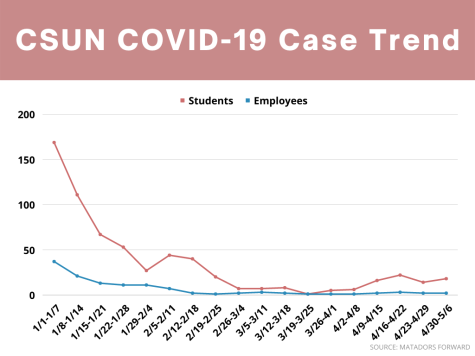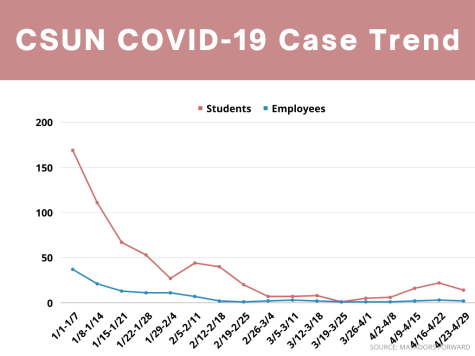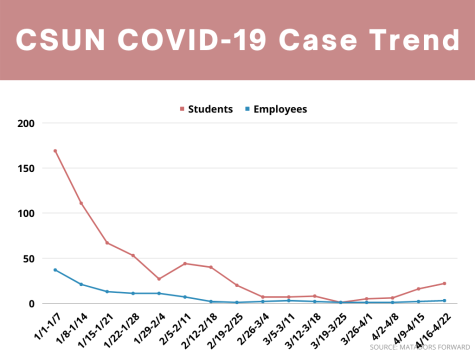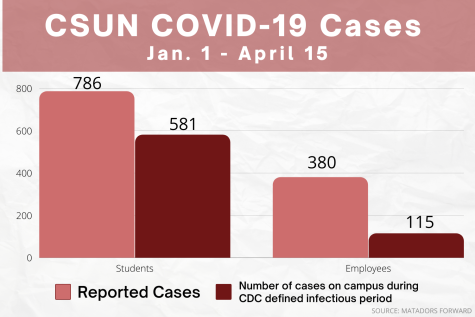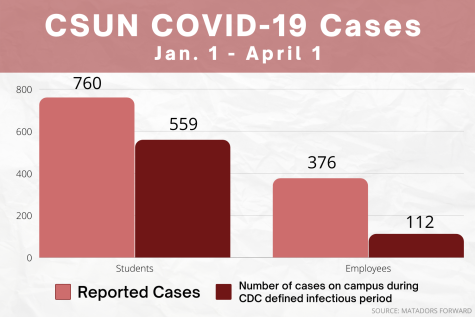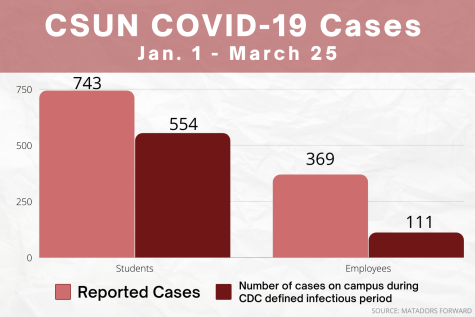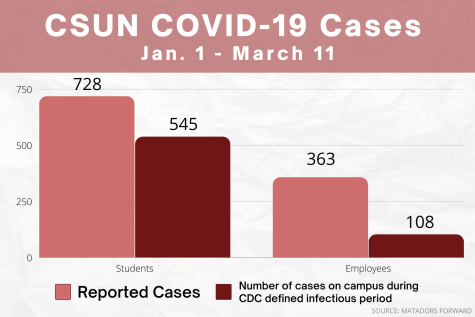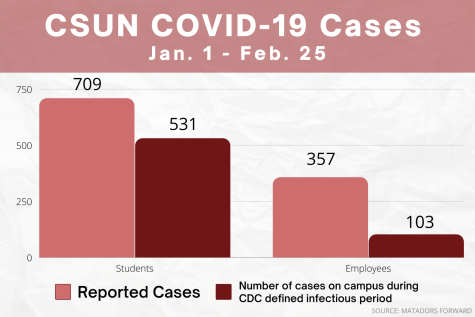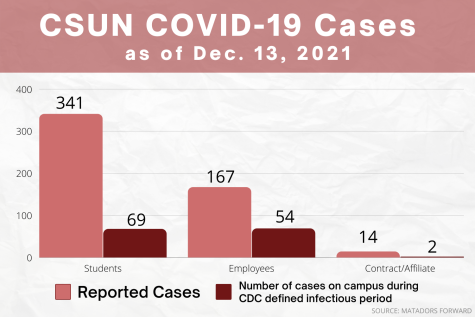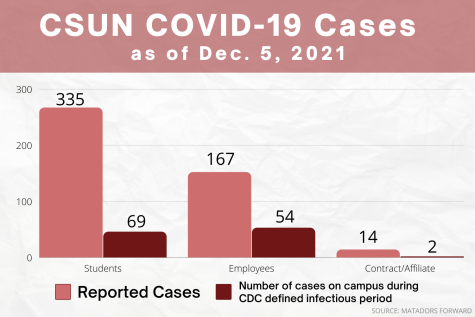CSUN Student Housing announces plans for fall, cuts resident occupancy by 58%
CSUN Student Housing has reduced their student occupancy from 3,400 students to 1,400 for the fall.
July 29, 2020
As the number of COVID-19 cases continues to spike in the United States, universities have been left to reimagine campus life this fall while ensuring protocols are in place to minimize the spread of the virus within the residential environment.
CSUN Student Housing and Residential Life announced in an email on July 6 its revised plan for the fall semester that includes a drastic reduction in resident occupancy from 3,400 students to 1,400 and a new applicant system designed to give preference to students with the greatest housing need.
“Our main priority is the safety of our students. It’s in every discussion within every aspect of the work that we’re doing right now,” said Claire Davis, the director of Student Housing and Residential Life. “It’s an opportunity for us to be creative.”
Davis said that while the decision and planning phase has not been easy for the department, the health of students and staff members has been the driving force behind the revised occupancy plan.
The limited housing space will be apportioned through a 3-tier priority system, according to the announcement.
Tier 1 priority applies to students considered to have a great need for campus housing. This level includes former foster youth, homeless veterans, individuals with disabilities and international and domestic non-California residents.
Tier 2 includes returning residents, and tier 3 applies to first-time freshmen and first-time transfer students who are new to on-campus housing. Priority will also go to students that have an in-person class or lab scheduled for the semester.
Student Housing worked closely with the CSUN Environmental Health and Safety Department and the Klotz Student Health Center to determine the revised occupancy plan. The departments relied on the recommendations and guidelines from the Centers for Disease Control and Prevention, the World Health Organization, and the L.A. County Department of Public Health.
Melissa Giles Martin, associate director for Residential Life, said a shift to on-campus housing for first-time freshmen and first-time transfer students will be challenging for some because student life will be a different experience due to the pandemic. That is why first-time students were placed in the third tier, according to Giles Martin.
“Our returning residents have lived here before, they’re more familiar with it,” Giles Martin said. “We felt more comfortable that our returning students will know somebody they’d like to live with, rather than two first-timers being put together.”
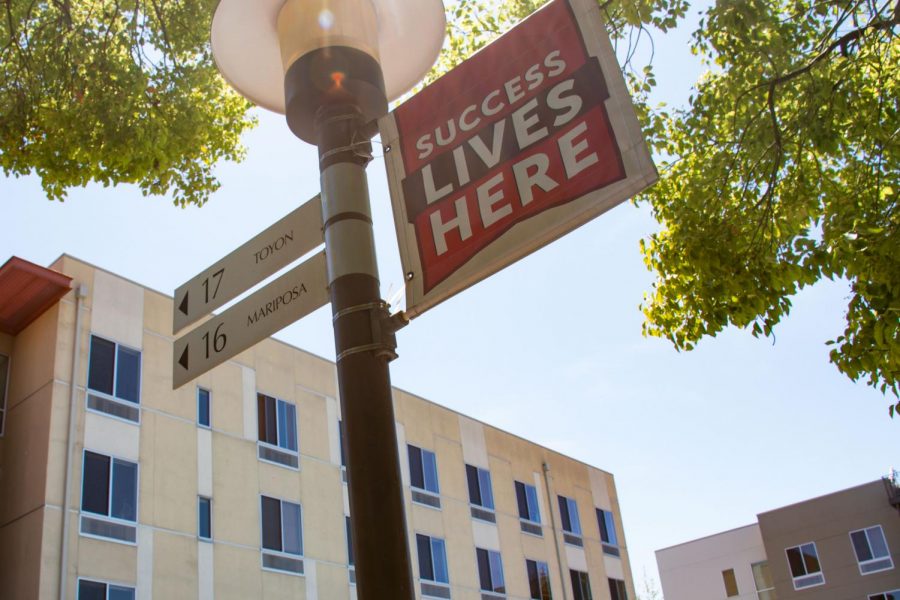
Student Housing adapted the physical layouts of the residential rooms and common spaces to support residents in adhering to the safety guidelines. The move-in process will be staggered over six days to reduce congestion and allow for physical distancing.
Students residing in the suites — single-bedroom units with shared restrooms — will be assigned their own bedroom, have sole access to a bathroom; they are also required to purchase a meal plan. Each suite would typically house two students and a bathroom would be shared among four students residing in two neighboring suites.
Apartments will house two students, as opposed to the standard four students, per apartment. Each student will have their own bedroom and share a bathroom with their apartment mate.
“We’re allowing two (students) per apartment, one per bedroom, because it’s possible within that space to be six feet apart and still communicate,” Giles Martin said.
There will be specific cleaning procedures for each apartment to adhere to. Student Housing will provide residents disinfectant and recommend that students sanitize kitchens and bathrooms before and after use.
Residents will be required to sign a living agreement that lays out COVID-19 guidelines. The guidelines include a no-guest policy to comply with physical distancing and will be strictly enforced, according to the agreement. Social gatherings will be prohibited, doing away with a pivotal element to college life and the university experience.
Each morning before students leave their room, they will be required to take their temperature and complete an online survey. The survey will consist of five questions that check for virus-related symptoms, whether the student knows they have been exposed to anyone with COVID-19 within a 16-day timeframe, or if a student has traveled outside of the U.S. within the last 2 weeks.
If a student answered any of the questions with a “yes,” the student must stay in their room and report symptoms or suspected exposure to the Klotz Center. There will be designated isolation and quarantine units in student housing to reduce further exposure of the virus to others.
Davis cautioned students to fully consider all the options before deciding on their student housing contract.
“Students need to consider what it will be like — to live like this,” Davis said. “Being isolated without the ability to see someone throughout the day is not going to be for everybody.”
Most students who were contracted for fall semester housing have decided to opt-out, according to Davis.
“We’re not hearing the reasons why students are canceling,” Davis said. “Maybe in the future, we’ll do some sort of focus groups to get an idea of where they were in their decision making.”
Maritza Duran, the president of the Residence Halls Association, a student housing community organization, has witnessed a considerable shift in the housing atmosphere since the onset of the pandemic during the middle of the spring semester.
Student Housing encouraged residents to move out of campus housing to reduce the risk of virus transmission on campus when CSUN shifted to online instruction in March.
“After there was more information about COVID-19 and the steps housing and the university we’re taking for the semester, most students started going home, and they just kind of stayed home,” said Duran, who is also a current student housing resident.
“What I loved about housing was that my best friend was down the hall, and I could go there anytime and knock on the door. But that’s not realistic for fall,” Duran said.
Loya Clark, the operations manager for the RHA and a campus resident, has received mixed reactions from students regarding CSUN’s housing plans. She said that some students who don’t have an urgent need for housing have chosen to give up their space to someone who may need housing or whose status falls into a tier 3 category.
“Since quarantine began, it’s been a whole different experience,” Clark said. “From seeing the student population in its prime to now, it’s basically a ghost town.”
Students who chose to withdraw their contract were given a choice to cancel and receive a refund of the $50 application fee or defer their contract to the spring semester.
“Some students are concerned about the cost of housing and would rather put the financial aid money they use for housing and save it up for something else,” Clark said.
With virtual classes requiring fewer students to be on campus, it’s not going to be how it once was, a robust community of students gathering, spending time together, and sharing a unique experience.
The plan for the spring semester is still unknown at this point. If the university and local authorities allow for increased occupancy, Davis said Student Housing will be receptive to making the change.
“Even if it’s towards the end of fall, or in the middle of spring, we will be braced and ready to allow students to move in as soon as it’s safe for them to do so,” Davis said. “But it’s unknown at this point and it’s just too early to tell.”
More details regarding Student Housing and Residential Life can be found here.

